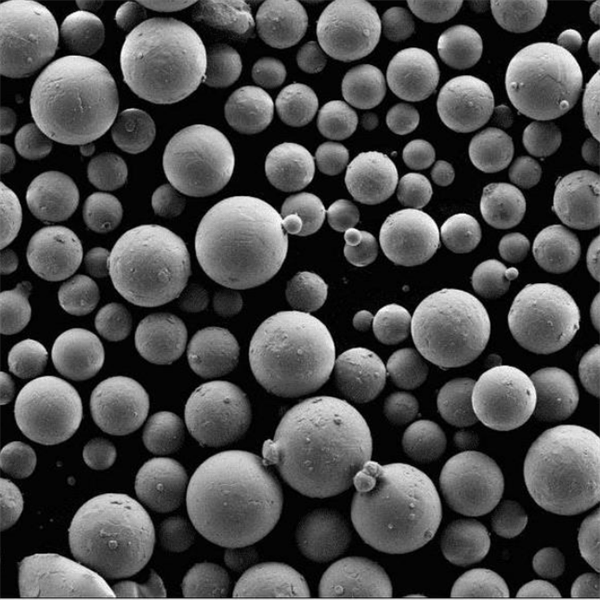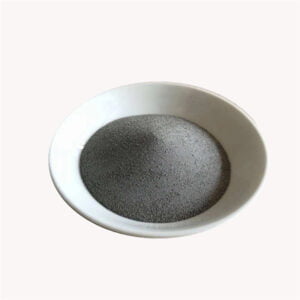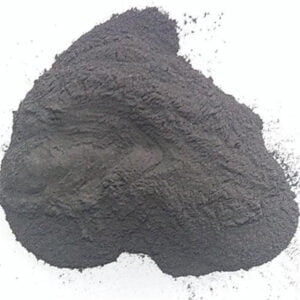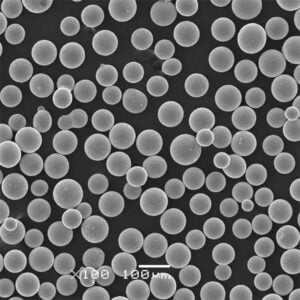High-Temperature Alloy M509
Table of Contents
High-temperature alloys are the unsung heroes of modern industry. They withstand the blistering heat of jet engines, power plants, and other high-stress environments. Among these alloys, M509 stands out as a superstar. Whether you’re an engineer, a materials scientist, or just someone curious about cutting-edge materials, this guide will dive deep into the world of M509, revealing its secrets, strengths, and applications. Ready to learn why M509 is such a big deal? Let’s get started.
Overview of High-Temperature Alloy M509
M509 is a cobalt-based superalloy known for its exceptional performance in high-temperature environments. But what makes it so special? It’s all about the blend of metals that come together to create an alloy capable of withstanding extreme conditions. From its robust composition to its impressive mechanical properties, M509 is designed to perform where others would fail.
What Makes M509 Stand Out?
The key to M509’s success lies in its composition. This alloy is primarily composed of cobalt, chromium, nickel, tungsten, and molybdenum. This unique blend allows it to maintain its strength and resist corrosion even at temperatures that would cause other materials to crumble.
Why Should You Care About M509?
If you’re in industries like aerospace, power generation, or any field that requires materials to operate reliably under intense heat, understanding M509 is crucial. Its resistance to oxidation, sulfidation, and other forms of degradation make it indispensable in environments where failure is not an option.

Composition of High-Temperature Alloy M509
Understanding the composition of M509 is like looking under the hood of a high-performance engine. Every element plays a role, contributing to the overall performance of the alloy. Here’s a detailed breakdown:
| Element | Percentage (%) | Role in Alloy |
|---|---|---|
| Cobalt (Co) | 50-60 | Base metal, provides high-temperature strength |
| Chromium (Cr) | 20-30 | Enhances corrosion and oxidation resistance |
| Nickel (Ni) | 5-10 | Increases strength, toughness, and thermal stability |
| Tungsten (W) | 5-10 | Adds to the creep resistance and overall durability |
| Molybdenum (Mo) | 0.5-3 | Improves strength at high temperatures |
| Carbon (C) | 0.1-0.2 | Contributes to hardness and wear resistance |
| Silicon (Si) | 1-2 | Aids in oxidation resistance |
| Manganese (Mn) | 0.5-1 | Improves overall toughness and workability |
Why This Mix?
Each element in M509 has a specific job. Cobalt provides the base structure, maintaining strength at high temperatures. Chromium and Silicon are the gatekeepers, protecting against corrosion and oxidation. Meanwhile, Nickel and Tungsten ensure that the alloy remains tough and durable, even under the most extreme conditions. Together, these elements create a superalloy that’s practically unbeatable in high-temperature applications.
Characteristics of High-Temperature Alloy M509
When it comes to high-temperature alloys, M509 doesn’t just talk the talk—it walks the walk. Its characteristics make it a top choice for demanding applications.
Key Characteristics of M509
- High-Temperature Strength: M509 retains its strength even at temperatures above 1000°C, making it ideal for extreme environments.
- Oxidation Resistance: The alloy forms a protective oxide layer that shields it from corrosive environments, ensuring long-term performance.
- Sulfidation Resistance: In industries where sulfur-containing gases are present, M509 stands up to the challenge, resisting sulfidation where other materials would degrade.
- Good Creep Resistance: M509 maintains its shape and mechanical properties under constant stress at high temperatures.
- Wear Resistance: Thanks to its composition, M509 offers excellent wear resistance, making it suitable for parts that experience high friction.
Mechanical Properties
Let’s dig deeper into the numbers that make M509 so reliable:
| Property | Value | Significance |
|---|---|---|
| Tensile Strength | 900-1000 MPa at room temperature | High tensile strength allows the material to withstand significant force without breaking. |
| Yield Strength | 700-800 MPa at room temperature | Indicates the stress at which the material begins to deform plastically. |
| Density | 8.9 g/cm³ | Affects the overall weight of components made from M509. |
| Melting Point | 1350-1400°C | Determines the temperatures at which the material can be used without melting. |
| Thermal Conductivity | 14-18 W/m·K | Relatively low thermal conductivity helps in maintaining temperature gradients. |
| Hardness | 250-300 HB | Reflects the material’s resistance to indentation and wear. |
Why These Characteristics Matter
In the world of high-temperature applications, every characteristic counts. For example, tensile strength and yield strength determine how much stress M509 can handle before deforming or breaking. Meanwhile, thermal conductivity ensures that heat doesn’t transfer too quickly, which can be crucial in maintaining performance under extreme conditions.
Advantages of High-Temperature Alloy M509
So, why should you choose M509 over other high-temperature alloys? Let’s break down the advantages.
1. Superior Temperature Resistance
M509’s ability to maintain strength and stability at temperatures exceeding 1000°C is its most significant advantage. This makes it ideal for applications where other materials would fail, such as in jet engines or gas turbines.
2. Excellent Corrosion and Oxidation Resistance
In environments where exposure to corrosive elements is a concern, M509 excels. Its high chromium content forms a protective oxide layer, preventing oxidation and ensuring the material’s longevity.
3. Versatility Across Industries
Whether it’s aerospace, power generation, or even chemical processing, M509’s unique properties make it versatile. It can be used in various components, from turbine blades to industrial furnace parts, making it a go-to material for engineers.
4. Longevity and Reliability
When you’re dealing with high-stress environments, you need materials that you can trust to perform over the long haul. M509 offers that reliability, reducing the need for frequent replacements and lowering maintenance costs.
Applications of High-Temperature Alloy M509
Given its impressive properties, M509 finds use in a wide range of industries. Let’s explore where this alloy shines.
Key Industries Utilizing M509
- Aerospace
Turbine Blades and Vanes: M509 is commonly used in turbine blades and vanes due to its ability to withstand high temperatures and resist oxidation. - Power Generation
Gas Turbines: In power plants, M509 is used in gas turbines, where it must endure extreme heat and stress without degrading. - Chemical Processing
Reactors and Furnaces: The alloy’s resistance to corrosion and high temperatures makes it ideal for reactors and industrial furnaces. - Automotive
Exhaust Valves: In high-performance engines, M509 is used in exhaust valves, where it can handle the heat generated by combustion. - Marine Engineering
Ship Engines: M509 is also utilized in marine engineering, particularly in ship engines that operate under harsh conditions.
Detailed Application Table
| Industry | Application | Reason for Use |
|---|---|---|
| Aerospace | Turbine blades | High-temperature strength and oxidation resistance |
| Power Generation | Gas turbines | Maintains performance under extreme heat and pressure |
| Chemical Processing | Reactors, Furnaces | Corrosion resistance and stability in high-temperature environments |
| Automotive | Exhaust valves | Can withstand the intense heat of combustion engines |
| Marine Engineering | Ship engines | Handles harsh conditions and high temperatures in marine environments |
Why These Applications?
The high-temperature strength and corrosion resistance of M509 make it indispensable in these industries. Whether it’s the reliability needed in a jet engine or the durability required in a power plant turbine, M509 is the alloy of choice for critical components that can’t afford to fail.
Specifications, Sizes, Grades, and Standards of M509
When it comes to selecting M509 for your application, understanding the specifications, sizes, grades, and standards is crucial. Here’s what you need to know.
Standard Specifications and Grades
M509 is available in various grades and standards, depending on the application. Here’s a breakdown:
| Specification | Grade | Standards | Typical Applications |
|---|---|---|---|
| AMS 5844 | M509 | ASTM B167, B168 | Aerospace components, turbine blades |
| UNS R30059 | M509 | ISO 6208 | Industrial furnaces, chemical processing equipment |
| DIN 2.4964 | M509 | EN 10269 | High-temperature fasteners, automotive exhaust systems |
Available Sizes
M509 is available in various forms, each suited to different applications. Here’s a look at the available sizes:
| Form | Available Sizes | Common Uses |
|---|---|---|
| Bar | Diameter: 10mm – 200mm | Shafts, fasteners, turbine blades |
| Sheet/Plate | Thickness: 0.5mm – 50mm | Furnace components, reactor vessels |
| Wire | Diameter: 0.1mm – 5mm | Springs, welding wire, fasteners |
| Pipe/Tube | Outer Diameter: 6mm – 100mm, Wall: 1mm – 10mm | Exhaust systems, heat exchangers |
Why Understanding Specifications Matters
Selecting the right grade and size of M509 is crucial for ensuring that your application performs as expected. For example, using the wrong size or grade could lead to premature failure, resulting in costly repairs and downtime. Always consult with a materials engineer or supplier to ensure you’re getting the right M509 for your needs.
Suppliers and Pricing Details of M509
Choosing the right supplier for M509 can make a big difference in cost, quality, and delivery time. Here’s a look at some of the top suppliers and the pricing details for M509.
Top Suppliers
| Supplier | Location | Product Range | Reputation |
|---|---|---|---|
| Carpenter Technology | USA | Bars, Sheets, Wires | High-quality standards, reliable delivery |
| Haynes International | USA | Plates, Bars, Tubes | Known for innovation and quality |
| VDM Metals | Germany | Sheets, Plates, Bars | Trusted for European market |
| Special Metals | UK | Pipes, Sheets, Bars | Strong customer service and technical support |
| ATI Metals | USA | Bars, Plates, Sheets | Competitive pricing, wide distribution |
Pricing Overview
| Form | Price Range (per kg) | Factors Affecting Price |
|---|---|---|
| Bar | $50 – $70 | Size, quantity, and supplier location |
| Sheet/Plate | $60 – $80 | Thickness, size, and supplier reputation |
| Wire | $70 – $90 | Diameter, length, and market demand |
| Pipe/Tube | $65 – $85 | Outer diameter, wall thickness, and quantity |
How to Choose a Supplier
When selecting a supplier, consider factors like reputation, product range, delivery time, and pricing. It’s also important to look at customer reviews and, if possible, get references from other businesses that have used the supplier. The right supplier can make a significant difference in the quality and reliability of the M509 you receive.
Pros and Cons: M509 Compared to Other High-Temperature Alloys
Choosing the right alloy isn’t always straightforward. To help you make an informed decision, here’s a comparison of M509 with other high-temperature alloys.
M509 vs. Other High-Temperature Alloys
| Property | M509 | Inconel 718 | Hastelloy X | Waspaloy |
|---|---|---|---|---|
| Temperature Range | 1000-1100°C | 700-800°C | 950-1050°C | 870-980°C |
| Corrosion Resistance | Excellent | Good | Excellent | Very Good |
| Creep Resistance | Superior | Good | Good | Superior |
| Oxidation Resistance | Excellent | Very Good | Excellent | Very Good |
| Cost | Moderate | High | High | High |
| Availability | Good | Excellent | Moderate | Limited |
Key Takeaways from the Comparison
- Temperature Range: M509 can handle higher temperatures than Inconel 718 and Waspaloy, making it more suitable for extreme environments.
- Corrosion and Oxidation Resistance: M509 and Hastelloy X offer similar levels of protection, but M509 has the edge in overall versatility.
- Cost: While M509 is not the cheapest option, its performance justifies the cost, especially in critical applications.
- Availability: M509 is more readily available than some of its counterparts, making it easier to source for urgent projects.
Advantages and Limitations
| Advantages | Limitations |
|---|---|
| High-temperature strength | Higher cost compared to some other alloys |
| Excellent corrosion and oxidation resistance | Requires specific expertise for machining |
| Good availability across suppliers | May be over-specified for lower-stress applications |
Metal Powder Models: Specific Options in M509
In certain applications, M509 is used in powder form for additive manufacturing, coating processes, or other specialized uses. Here are some specific M509 metal powder models available in the market:
Top Metal Powder Models of M509
| Model Name | Particle Size | Applications | Special Features |
|---|---|---|---|
| M509-25 | 15-45 microns | Additive manufacturing | High flowability, consistent particle size |
| M509-50 | 30-60 microns | Thermal spray coatings | Excellent wear resistance, easy application |
| M509-Fine | 5-20 microns | Laser cladding, powder bed fusion | Fine particles, high precision |
| M509-Coarse | 50-150 microns | Powder metallurgy, press and sinter processes | Coarse particles, good for bulk applications |
| M509-SPRAY | 20-50 microns | Plasma spraying, HVOF coatings | Optimized for spray applications, high coverage |
| M509-Nano | <100 nanometers | Advanced manufacturing, nanotechnology | Nano-sized particles, cutting-edge applications |
| M509-3D | 20-50 microns | 3D printing, direct metal laser sintering (DMLS) | Designed for additive manufacturing, high detail |
| M509-WC | 10-40 microns | Wear-resistant coatings, tool making | Tungsten carbide blend, enhanced durability |
| M509-Binder Jet | 15-45 microns | Binder jetting, 3D printing | Compatible with binder jetting systems |
| M509-High Purity | 15-45 microns | Medical implants, aerospace parts | High purity, reduced impurities |
Why Choose M509 Metal Powders?
M509 metal powders are perfect for high-precision applications where traditional manufacturing methods fall short. Whether you’re working on 3D printing, coatings, or advanced manufacturing processes, these powders offer the same high-temperature resistance and durability as bulk M509, but with the flexibility and precision required for cutting-edge applications.

FAQs
Q1: What makes M509 different from other high-temperature alloys?
M509 stands out due to its exceptional high-temperature strength and resistance to oxidation and corrosion. Its unique composition of cobalt, chromium, nickel, tungsten, and molybdenum allows it to maintain its properties even in the most extreme environments. Compared to other alloys, M509 can withstand higher temperatures and offers better protection against wear and degradation.
Q2: In what forms can I purchase M509?
M509 is available in various forms, including bars, sheets, plates, wires, and powders. This versatility allows it to be used in a wide range of applications, from large industrial components to precision parts in additive manufacturing.
Q3: How does M509 compare to Inconel 718?
While both M509 and Inconel 718 are high-temperature alloys, M509 can handle higher temperatures, making it more suitable for extremely demanding environments. However, Inconel 718 is more widely available and may be more cost-effective for less extreme applications.
Q4: What industries commonly use M509?
M509 is widely used in aerospace, power generation, chemical processing, automotive, and marine engineering. Its ability to withstand high temperatures and resist corrosion makes it ideal for components like turbine blades, exhaust valves, reactors, and industrial furnaces.
Q5: Can M509 be used in additive manufacturing?
Yes, M509 is available in powder form, making it suitable for additive manufacturing processes like 3D printing, laser cladding, and thermal spraying. These powders offer the same high-temperature and corrosion-resistant properties as bulk M509, with the added benefit of high precision and versatility in advanced manufacturing techniques.
Share On
MET3DP Technology Co., LTD is a leading provider of additive manufacturing solutions headquartered in Qingdao, China. Our company specializes in 3D printing equipment and high-performance metal powders for industrial applications.
Inquiry to get best price and customized Solution for your business!
Related Articles
About Met3DP
Recent Update
Our Product
CONTACT US
Any questions? Send us message now! We’ll serve your request with a whole team after receiving your message.

Metal Powders for 3D Printing and Additive Manufacturing
COMPANY
PRODUCT
cONTACT INFO
- Qingdao City, Shandong, China
- [email protected]
- [email protected]
- +86 19116340731


















